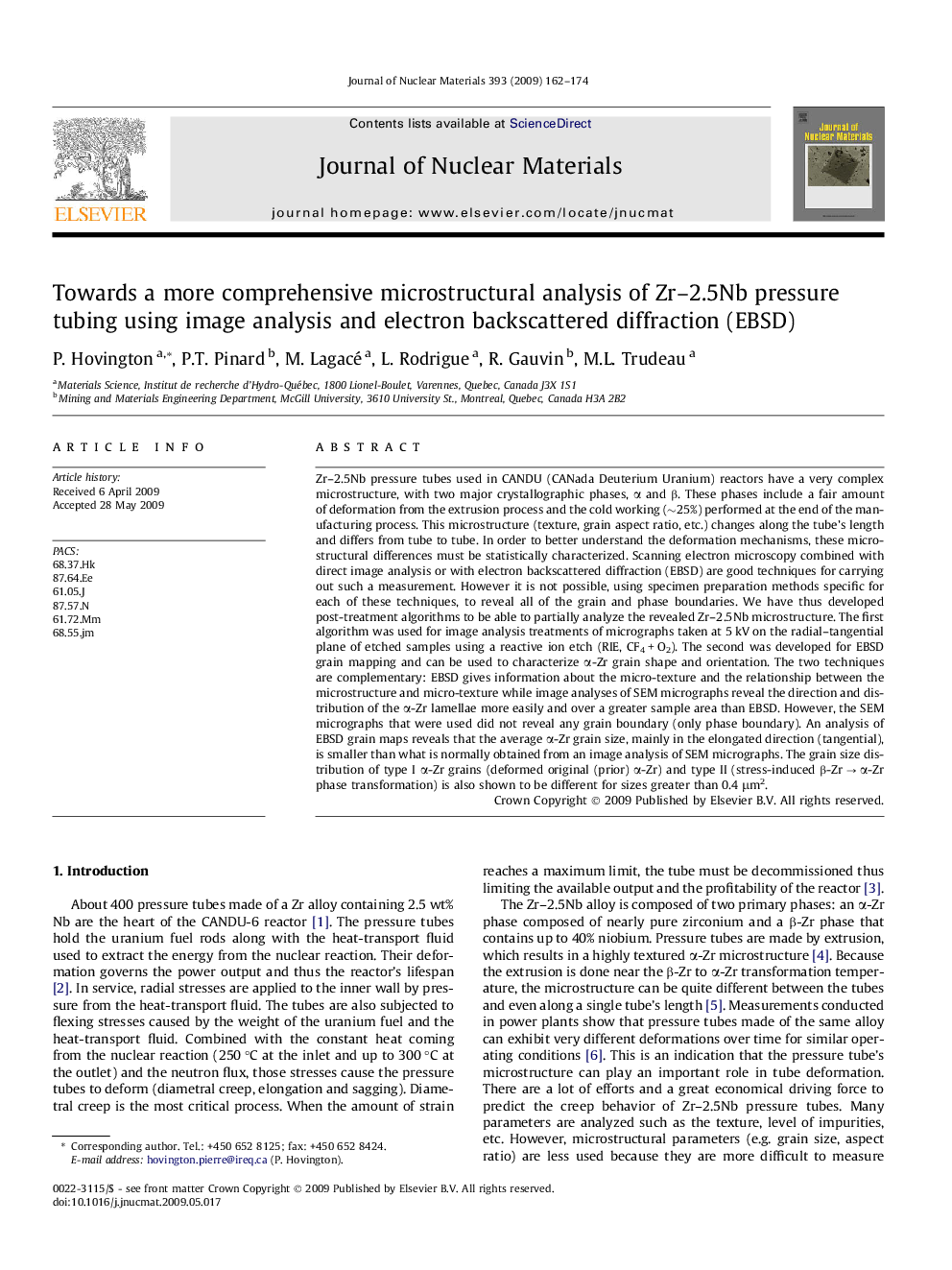| Article ID | Journal | Published Year | Pages | File Type |
|---|---|---|---|---|
| 1567823 | Journal of Nuclear Materials | 2009 | 13 Pages |
Abstract
Zr-2.5Nb pressure tubes used in CANDU (CANada Deuterium Uranium) reactors have a very complex microstructure, with two major crystallographic phases, α and β. These phases include a fair amount of deformation from the extrusion process and the cold working (â¼25%) performed at the end of the manufacturing process. This microstructure (texture, grain aspect ratio, etc.) changes along the tube's length and differs from tube to tube. In order to better understand the deformation mechanisms, these microstructural differences must be statistically characterized. Scanning electron microscopy combined with direct image analysis or with electron backscattered diffraction (EBSD) are good techniques for carrying out such a measurement. However it is not possible, using specimen preparation methods specific for each of these techniques, to reveal all of the grain and phase boundaries. We have thus developed post-treatment algorithms to be able to partially analyze the revealed Zr-2.5Nb microstructure. The first algorithm was used for image analysis treatments of micrographs taken at 5 kV on the radial-tangential plane of etched samples using a reactive ion etch (RIE, CF4 + O2). The second was developed for EBSD grain mapping and can be used to characterize α-Zr grain shape and orientation. The two techniques are complementary: EBSD gives information about the micro-texture and the relationship between the microstructure and micro-texture while image analyses of SEM micrographs reveal the direction and distribution of the α-Zr lamellae more easily and over a greater sample area than EBSD. However, the SEM micrographs that were used did not reveal any grain boundary (only phase boundary). An analysis of EBSD grain maps reveals that the average α-Zr grain size, mainly in the elongated direction (tangential), is smaller than what is normally obtained from an image analysis of SEM micrographs. The grain size distribution of type I α-Zr grains (deformed original (prior) α-Zr) and type II (stress-induced β-Zr â α-Zr phase transformation) is also shown to be different for sizes greater than 0.4 μm2.
Related Topics
Physical Sciences and Engineering
Energy
Nuclear Energy and Engineering
Authors
P. Hovington, P.T. Pinard, M. Lagacé, L. Rodrigue, R. Gauvin, M.L. Trudeau,
